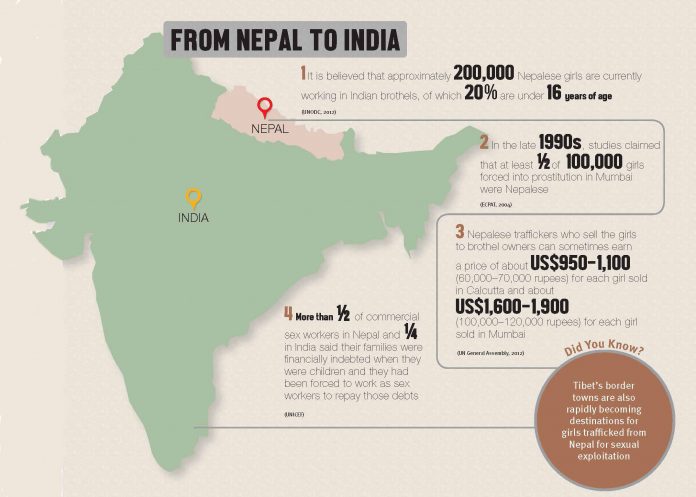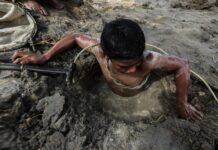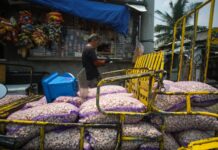by Anna Malika, with Selina Tan. Additional Information: 3 Angels Nepal
Deprived of the basic essentials for survival, children – viscerally afraid of an uncertain reality – can easily be led by the false promises of food, a decent wage, or even security and affection.
Child sex trafficking is arguably one of Nepal’s most pressing social issues. The fairer-skinned Nepalese girls are prized in Indian brothels, and a lack of education means they are innocent to “stranger danger”. Between 5,000 and 15,000 Nepali girls are trafficked over the Indian border every year, mostly from northern central Nepal.
Nepal In Numbers:
26.28 minutes
(3 Angels Nepal)
[/info_list_item][info_list_item list_icon=”Defaults-female” animation=”bounceIn”]20,000 girls are trafficked each year
(3 Angels Nepal)
[/info_list_item][info_list_item list_icon=”Defaults-female” animation=”bounceIn”]A girl is trafficked for an average of
US$104.63[/info_list_item][info_list_item list_icon=”Defaults-female” animation=”bounceIn”]Every day, more than
54 young girls and women
are trafficked out of Nepal[/info_list_item][/info_list]

NGOs estimate that 10,000-15,000 Nepali women and girls are trafficked to India annually, while 7,500 children are trafficked domestically for commercial sexual exploitation
[/bsf-info-box][bsf-info-box icon_size=”32″]
The UNODC Global Report in Trafficking in 2012 notes that children constitute 36% of all Nepalese trafficking victims, with girls constituting 33% and boys, 3%. Female victims make up 86% of the total number of trafficking victims from Nepal
[/bsf-info-box][bsf-info-box icon_size=”32″]

The predominant labour sector in which trafficked Nepalese children are forced to work is prostitution. Between 16 and 33% of females in the adult entertainment industry in Nepal are under the age of 18
[/bsf-info-box][bsf-info-box icon_size=”32″]

Close to 20% of sex workers in Kathmandu are said to be younger than 17, with the majority originating from rural areas
[/bsf-info-box]
Check out the rest of this article in Asian Geographic No.111 Issue 3/2015 ) here or download a digital copy here











